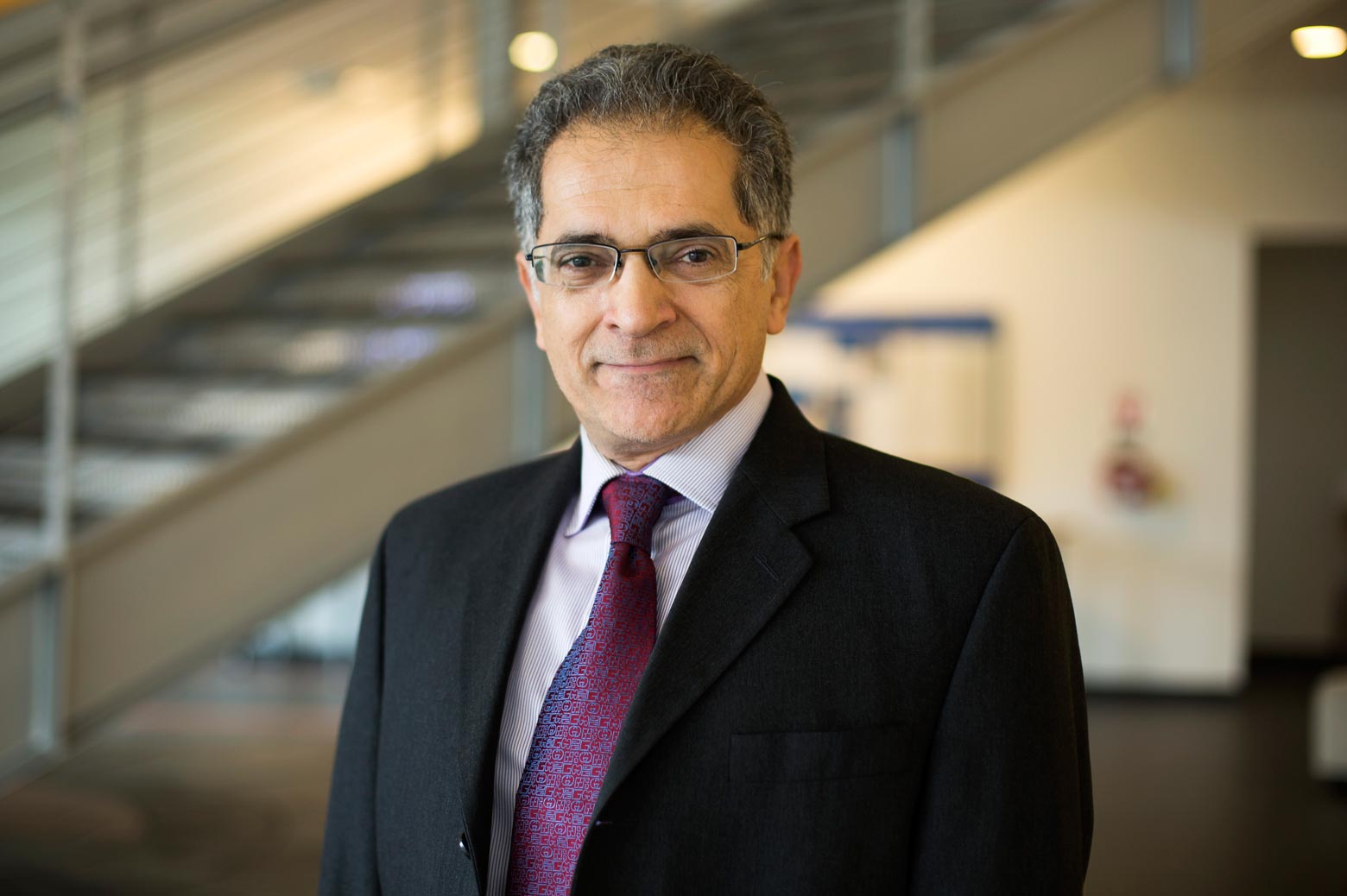Kamal Sarabandi named Fellow of the National Academy of Inventors
Sarabandi is an internationally-renowned researcher in the areas of applied electromagnetics and remote sensing.

 Enlarge
Enlarge
Kamal Sarabandi, the Rufus S. Teesdale Professor of Engineering and Director of the Radiation Laboratory and the Center of Excellent for Microwave Sensor Technology, has been named a Fellow of the National Academy of Inventors (NAI).
Election to NAI Fellow status is a high professional distinction given to academic inventors around the world “who have demonstrated a prolific spirit of innovation in creating or facilitating outstanding inventions that have made a tangible impact on quality of life, economic development and the welfare of society.”
Prof. Sarabandi is an internationally-renowned researcher in the areas of applied electromagnetics and remote sensing. His areas of specialty include microwave and millimeter-wave radar remote sensing, antennas, metamaterials, wireless systems, and millimeter-wave and submillimeter-wave subsystems and components with applications to radar imaging (collision avoidance, autonomous vehicle control, security, etc.).
He has been a pioneer in the development of antennas for miniature mobile platforms, and in the merging of acoustics and electromagnetics for subsurface sensing and imaging for use in biomedical imaging as well as underground target detection.
Prof. Sarabandi directed the Center for Objective Microelectronics and Biomimetic Advanced Technology (COMBAT) from 2008-2018. This multi-institutional center, funded by the U.S. Army Lab’s Micro-Autonomous Systems and Technology (MAST) program, brought together experts in radar and remote sensing, integrated circuits, imaging, navigation, power harvesting, communications, and nano-fabrication techniques. COMBAT led to several groundbreaking projects, including Sarabandi and his team’s development of the world’s smallest and most advanced radar that can be used on miniaturized airborne platforms to image objects behind walls, as well as provide for collision avoidance and mapping the interiors of buildings.
He currently is director of the Center of Excellence for Microwave Sensor Technology, which is focused on advanced research in microwave sensor technology. Initial projects in this long-term collaboration between the University of Michigan and Saudi Arabia’s King Abdulaziz City for Science and Technology (KACST) include the development of sensors for autonomous vehicles and novel approaches to electric vehicle charging.
His leadership activities also include two terms on the NASA Advisory Council (advisory to the NASA Administrator), President of the IEEE Geoscience and Remote Sensing Society, and Chair of Commission F, United States National Committee for The International Union of Radio Science (USNC/URSI).
He holds 19 U.S. patents and is co-founder of four startup companies: EMAG Technologies, Gradient Technologies LLC (acquired in 2002), Opteos LLC, and most recently, Navisense, Inc. These companies have contributed more than $100M to the local economy.
Prof. Sarabandi has chaired 52 dissertations and directs a team of 15 students on average. He and his students are the recipients of 31 paper awards. His numerous awards include the IEEE Judith A. Resnik Field Award, IEEE Geoscience and Remote Sensing Society Distinguished Achievement Award, NASA Group Achievement Award, Humboldt Research Award for senior scientists from The Alexander von Humboldt Foundation, and IEEE Geoscience and Remote Sensing Society Education Award.
He is a Fellow of the American Association for the Advancement of Science (AAAS) and IEEE.
The NAI Fellows will be inducted on April 10, 2020, as part of the 9th Annual Meeting of the National Academy of Inventors. This year’s theme is Sustainable Futures: Propelling Innovative Ecosystems.
 MENU
MENU 
